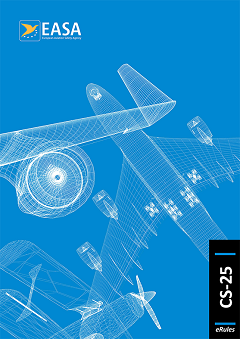ED Decision 2016/010/R
(See AMC 25.1121)
For powerplant installations the following apply:
(a) Each exhaust system must ensure safe disposal of exhaust gases without fire hazard or carbon monoxide contamination in any personnel compartment. For test purposes, any acceptable carbon monoxide detection method may be used to show the absence of carbon monoxide. (See AMC 25.1121(a).)
(b) Each exhaust system part with a surface hot enough to ignite flammable fluids or vapours must be located or shielded so that leakage from any system carrying flammable fluids or vapours will not result in a fire caused by impingement of the fluids or vapours on any part of the exhaust system including shields for the exhaust system. (See AMC 25.1121(b).)
(c) Each component that hot exhaust gases could strike, or that could be subjected to high temperatures from exhaust system parts, must be fireproof. All exhaust system components must be separated by fireproof shields from adjacent parts of the aeroplane that are outside the engine compartment.
(d) No exhaust gases may discharge so as to cause a fire hazard with respect to any flammable fluid vent or drain.
(e) No exhaust gases may discharge where they will cause a glare seriously affecting pilot vision at night.
(f) Each exhaust system component must be ventilated to prevent points of excessively high temperature.
(g) Each exhaust shroud must be ventilated or insulated to avoid, during normal operation, a temperature high enough to ignite any flammable fluids or vapours external to the shroud.
[Amdt 25/18]
ED Decision 2003/2/RM
1 If necessary, each exhaust system should be provided with drains to prevent hazardous accumulation of fuel under all conditions of operation.
2 Tests should be made to demonstrate compliance with CS 25.1121(a) and these should include engine starting in downwind conditions and thrust reversal.
ED Decision 2003/2/RM
Leakage should be interpreted to include fuel discharged from the jet pipe under false start conditions both on the ground and in flight. It should be demonstrated that successive attempts to restart do not create a fire hazard. The maximum time for complete drainage of fuel following a false start should be established. This period will be used to determine the minimum interval between start attempts.
ED Decision 2003/2/RM
For powerplant installations, the following apply:
(a) Exhaust piping must be heat and corrosion resistant, and must have provisions to prevent failure due to expansion by operating temperatures.
(b) Piping must be supported to withstand any vibration and inertia loads to which it would be subjected in operation; and
(c) Piping connected to components between which relative motion could exist must have means for flexibility.
